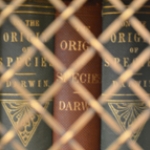I am pleased to announce that all of the accessions in the Carolyn Caddes Papers (M0658) are now described and available for research. For several years, only one accession was described online but thanks to Monika Lehman, our Public Services Intern, the rest of the accessions are open now for research.
Monika describes her experience processing this incredibly rich collection:
I had the opportunity to process Carolyn Caddes' papers. Carolyn is a portrait photographer who is most known for her collection of portraits published in a book entitled Portraits of Success: Impressions of Silicon Valley Pioneers (1986). Caddes spent years interviewing, photographing and researching the major players in Silicon Valley who worked in the technology sector, venture capitalism and government.



 Twitter
Twitter


 Stanford University Home
Stanford University Home